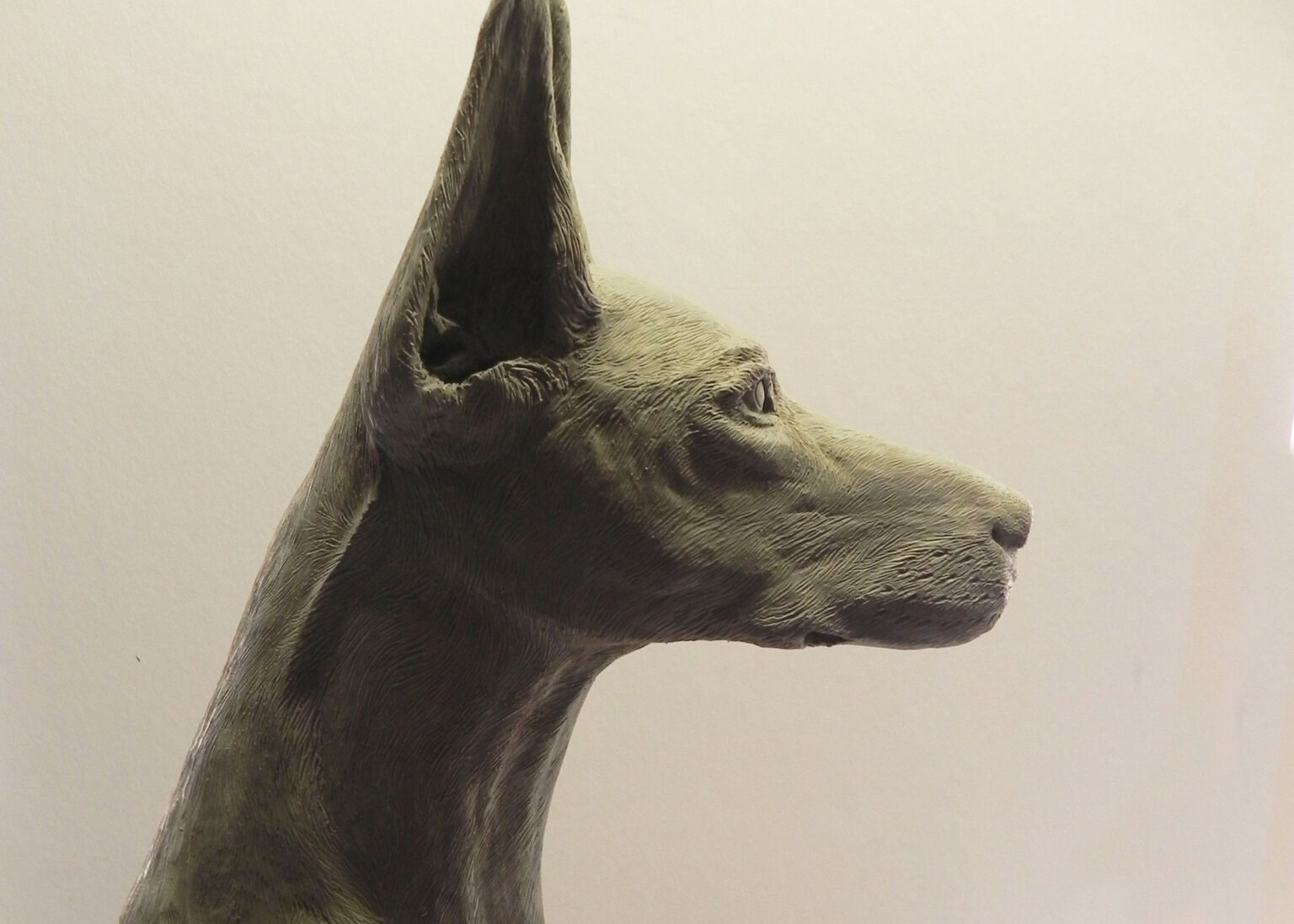
Step 1: Artwork
Our staff artisans will study or create the sculpture and make a determination on how the sculpture will be sectioned or "laid up" for mold making. Complex molds will require the original artwork to be cut into smaller manageable pieces. This is, by far, the most critical step of the procedure. The detail of the original must be captured and transferred in the mold, if not, they will be difficult to replace in any other step.
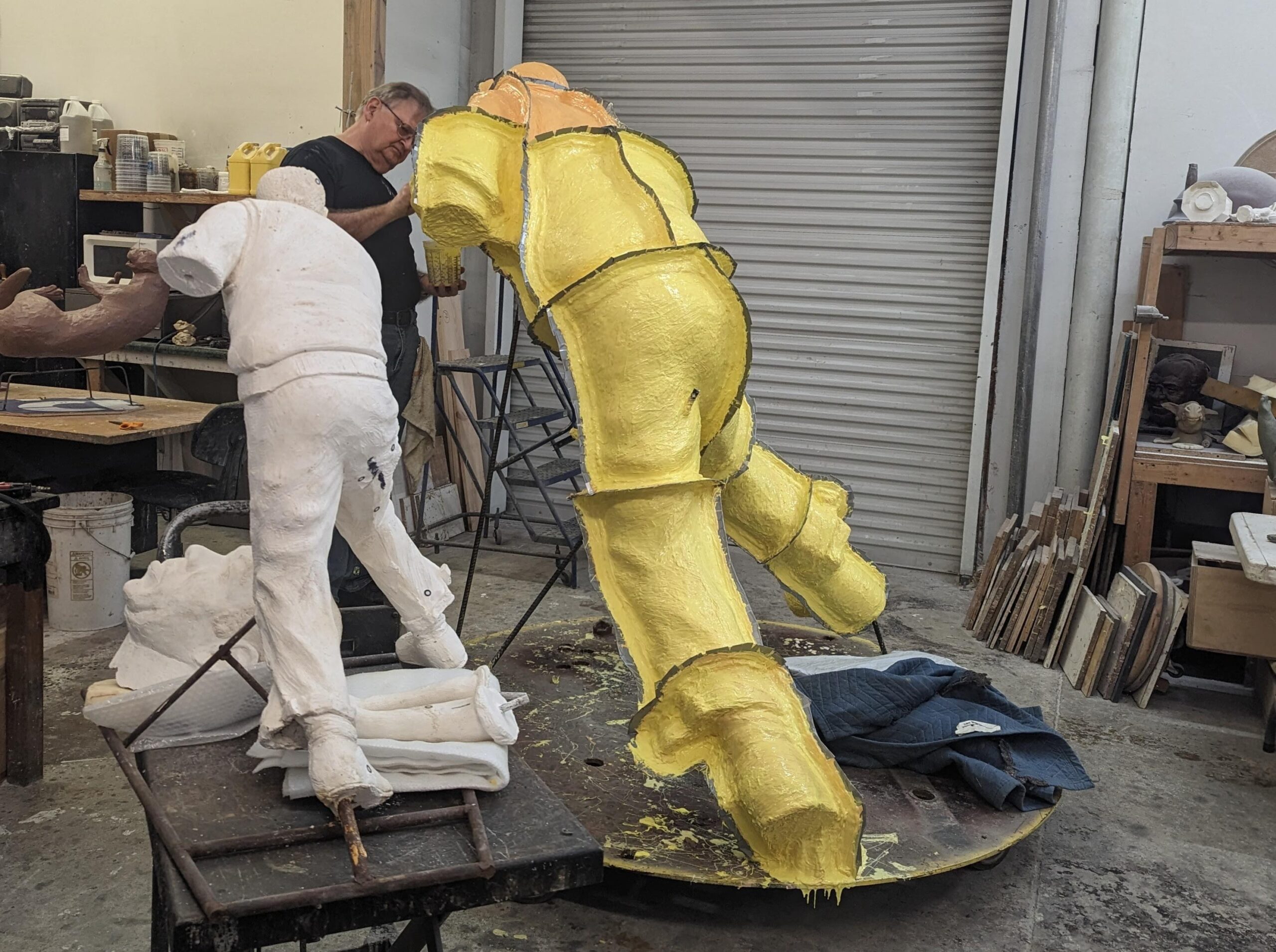
Step 2: Molds
The sculpture is first sealed and then a release agent is applied to allow for easy removal of the rubber mold. Depending on the artist's requirements, we will create a silicone, latex, or polyurethane mold.After the original sculpture has been prepared, the Master Mold Maker will apply the first coat of rubber. Once the rubber has set, additional coats must be applied and "keys" will be placed in the rubber to ensure proper positioning of the mold. When the rubber is thoroughly set, a back-up shell or "Mother Mold" is applied to support set, a back-up shell or "Mother Mold" is applied to support the rubber for the wax pouring process. Previously, plaster was used for this process. Today, the most widely used material is fiberglass due to it's
strength, durability, and, weighs much less than plaster. A release agent is applied on one half of the rubber mold then the fiberglass is laid down on the rubber, followed by the resin, and allowed to dry. Depending on the size of the mold and the strength needed, several coats may need to be applied. Then the mold and mother mold are flipped over and the process is repeated on the other half. The back-up shell is removed and the rubber is gently pulled back to remove the original sculpture. The rubber is then cleaned of any remaining particles from the original. It is now ready to receive the wax.
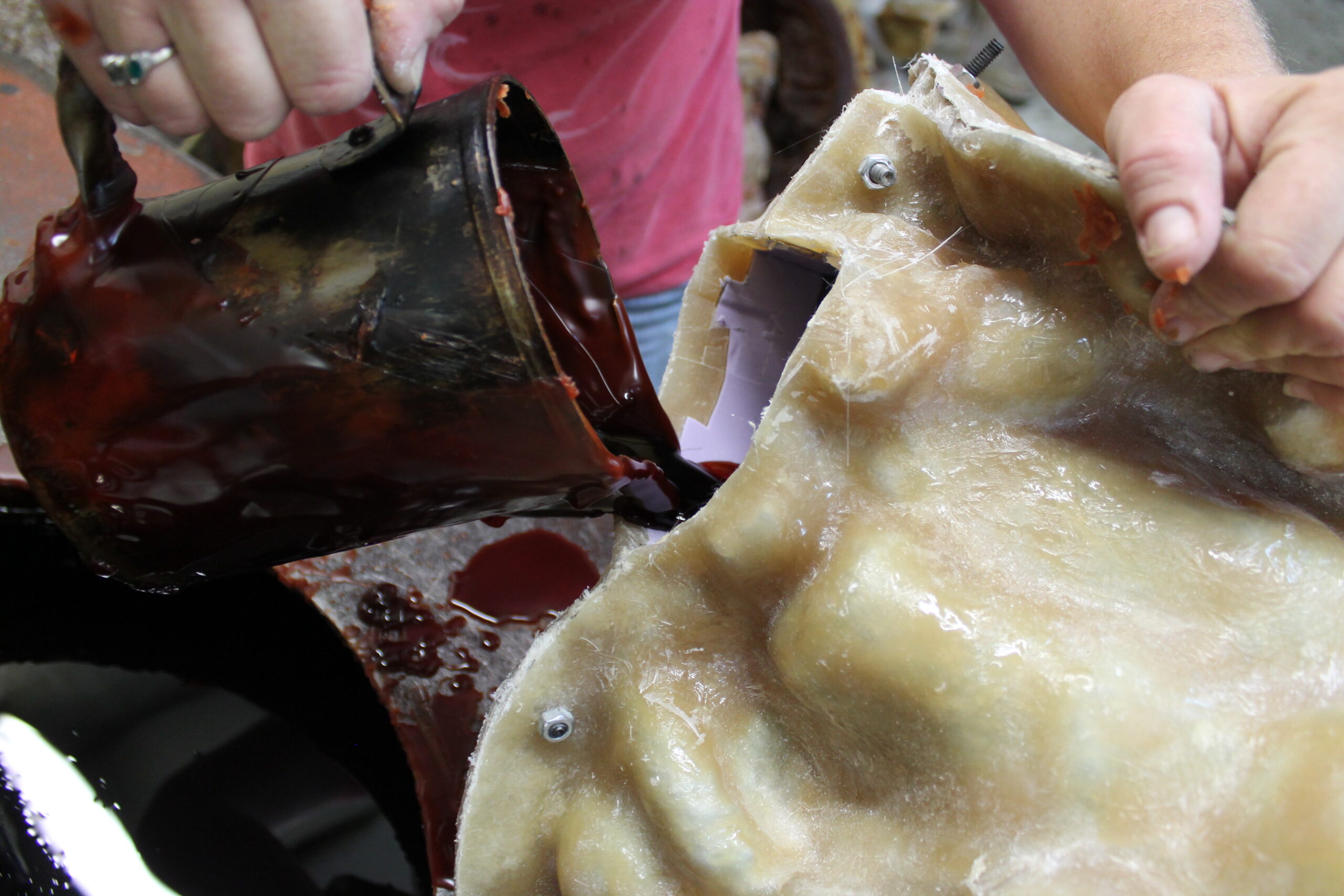
Step 3: Wax Casting
The completed mold, having already been prepped, is now ready for the wax. The mold is separated and the first coat of wax is painted into the mold to capture all the fine details of the artist's masterwork. The mold is put together and more wax is poured in. It is then rotated until an even, thin coating is achieved. Once it has cooled, a second coat is applied and rotated to achieve a thickness of 3/16 to 1/4 of an inch. The excess wax is poured out. After the wax has completely cooled, the "mother mold" followed by the rubber mold is removed. Now the wax casting is revealed.
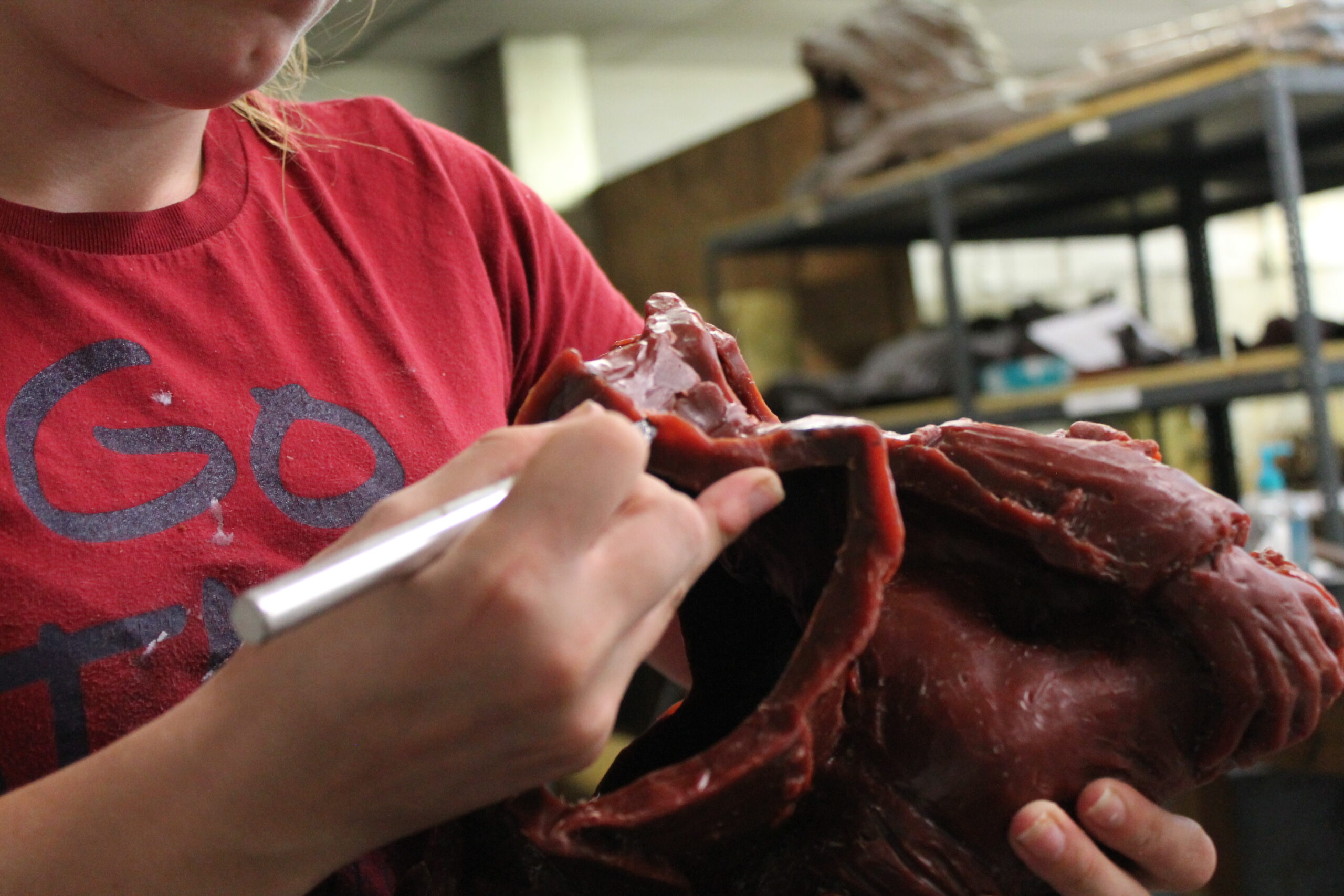
Step 4: Wax Chasing
Seam lines are removed and the wax pieces are fitted for alignment. Then the register marks are put in, followed by the final wax inspection.
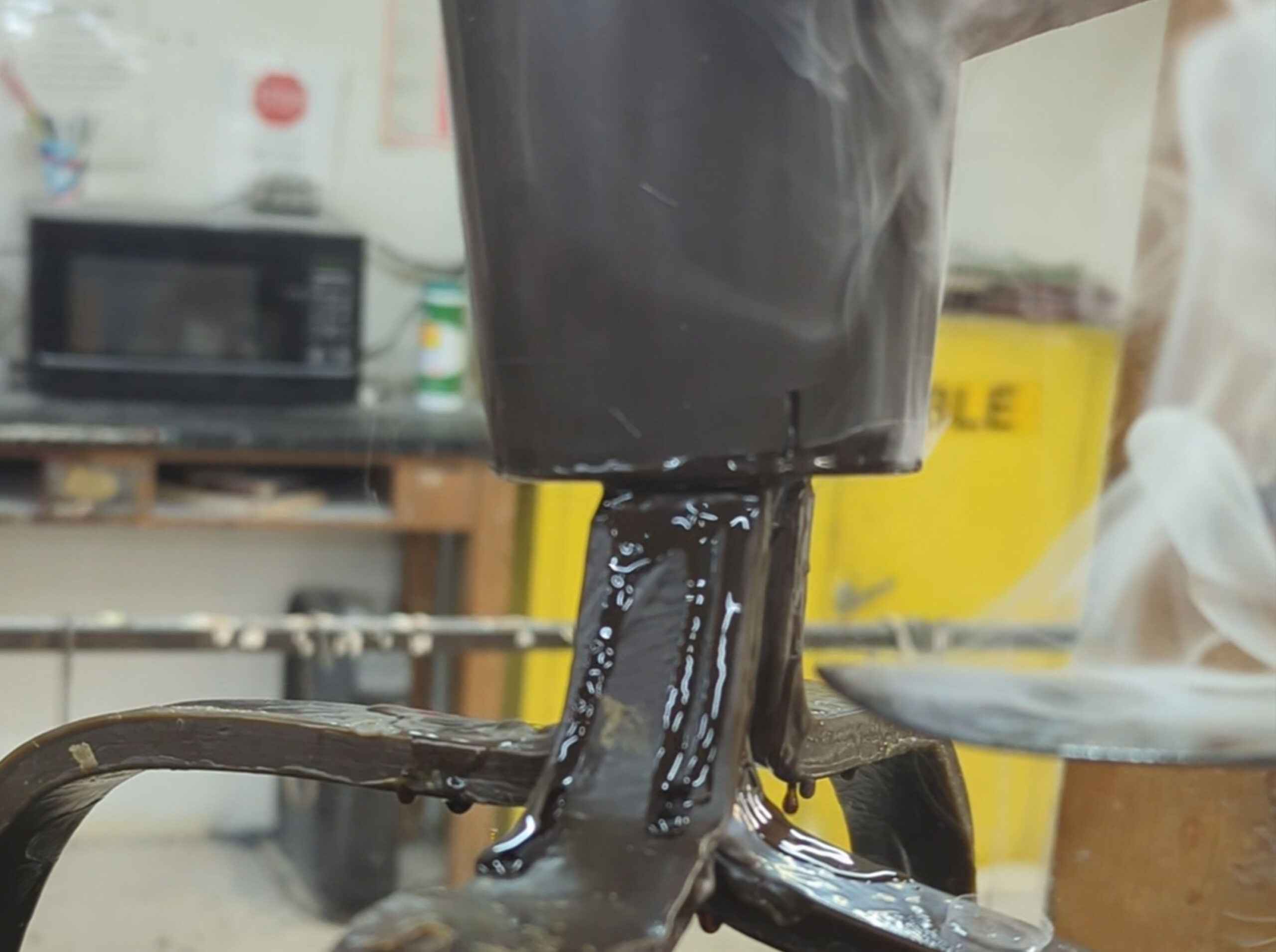
Step 5: Spruing and Gating
Wax rods are attached to the sculpture. These rods are called sprues or gates. A large cup is attached at one end, this cup will receive the molten bronze when poured. The placement of the gate system allows molten bronze to flow through these areas allowing gases to escape through smaller bars called vents.
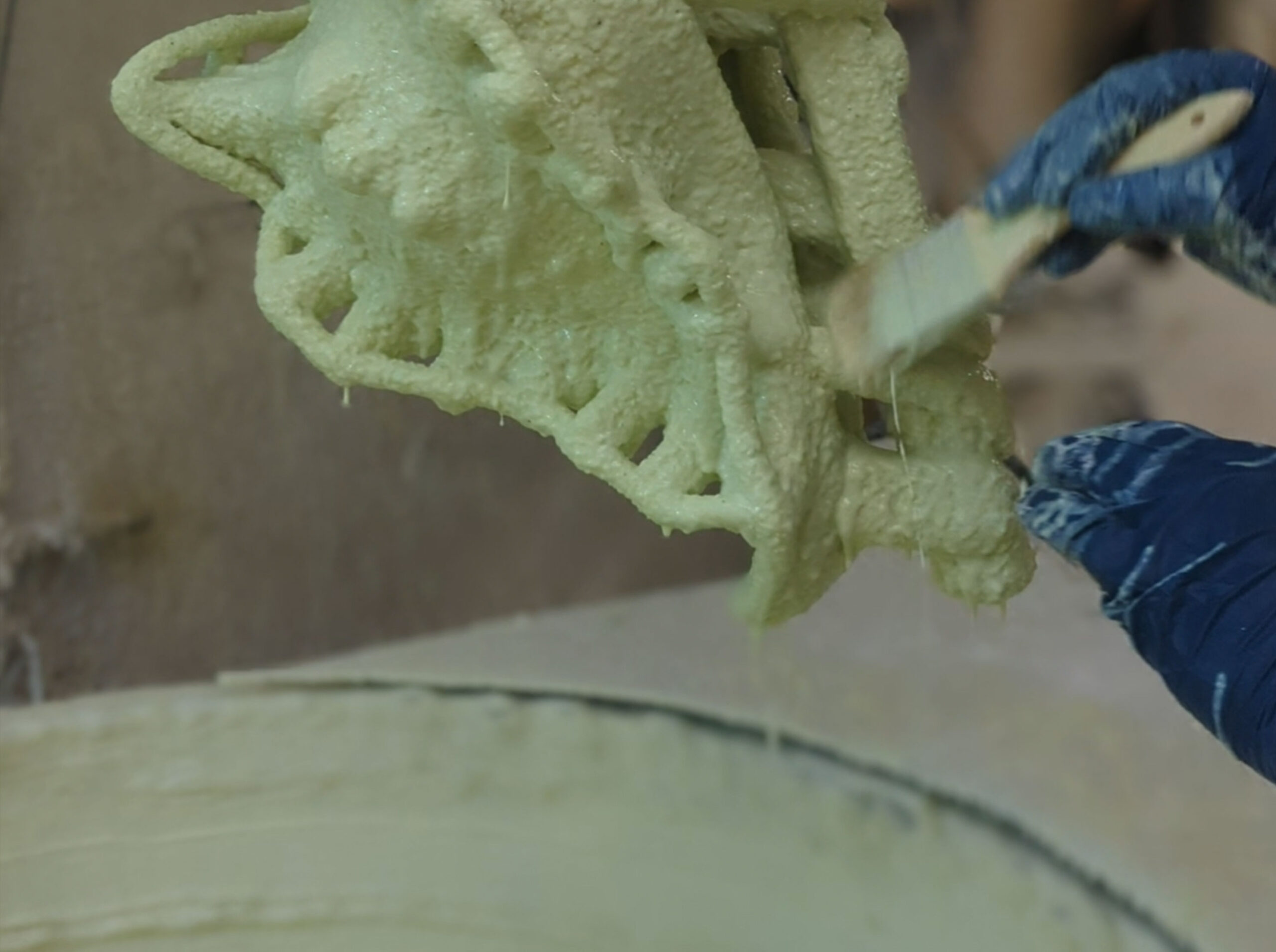
Step 6: Ceramic Shell
We are now making a secondary mold. Though the materials are much more modern, this serves the same function as mud did 5,000 years ago. We now dip the wax in a liquid binder solution. This material is called "slurry" and a very fine silica sand is applied. Each coating is completely dried prior to the next. The number of coats applied to a piece is determined by the size and weight of the piece. The heavier the piece the thicker the shell must be to support the metal. The slurry coats the inside and outside of the wax allowing the sculpture to be hollow. The chemical makeup of the slurry is monitored constantly to ensure its strength. The humidity and temperature of the slurry room are controlled to allow for optimum dryness and hardness of the shells.
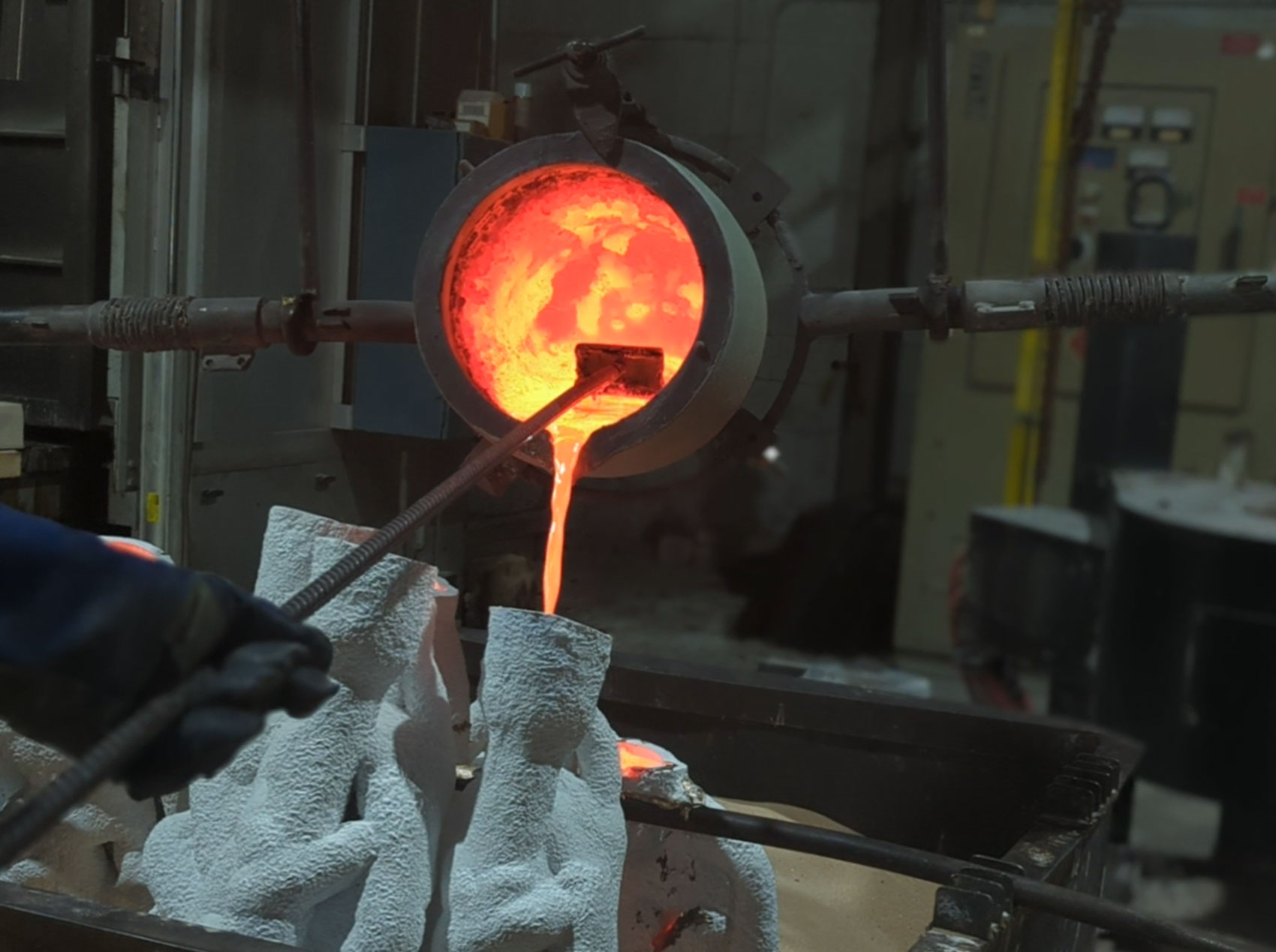
Step 7: Metal Casting
The ceramic shell is removed from the slurry room and placed in an autoclave or a burn-out oven cup side down. A burn-out oven is simply a large flame-heated oven, an autoclave is a large machine that heats up under steam pressure. Either method will allow the shells to de-wax. Once the shells are de-waxed, they are cooled and inspected for cracking. Once again they are heated up to 1400 degrees and placed in the pouring pit. Bronze ingots are heated from 1900 to 2100 degrees. The temperature at which bronze is poured is determined by each individual casting. The molten bronze is then poured into the hollow shells and allowed to cool and solidify.
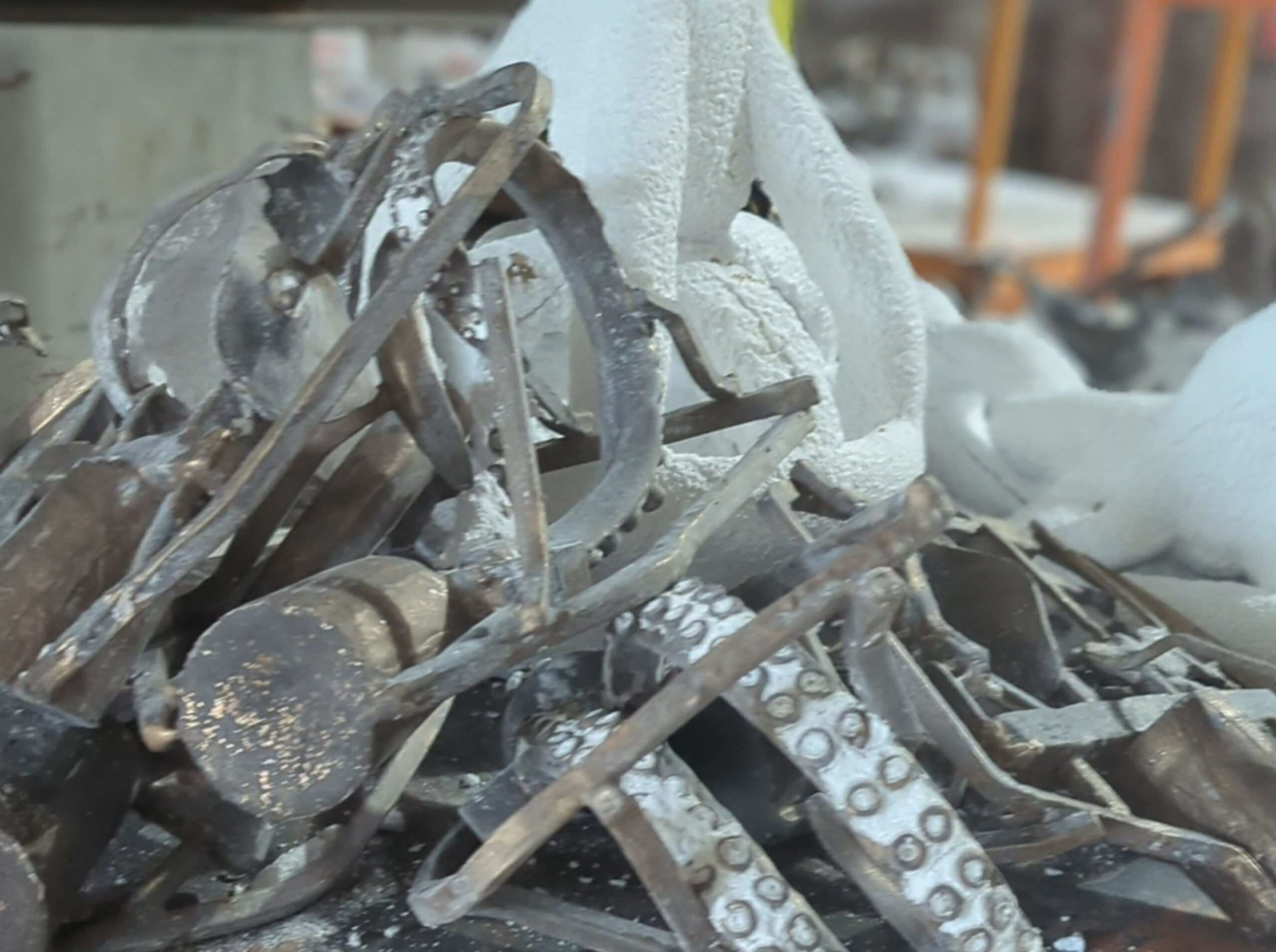
Step 8: Devesting
The shell material is now removed inside and out, and the unfinished bronze casting is revealed. It is then glass beaded, water or sand blasted to remove any remaining shell material from the intricate details of the casting.
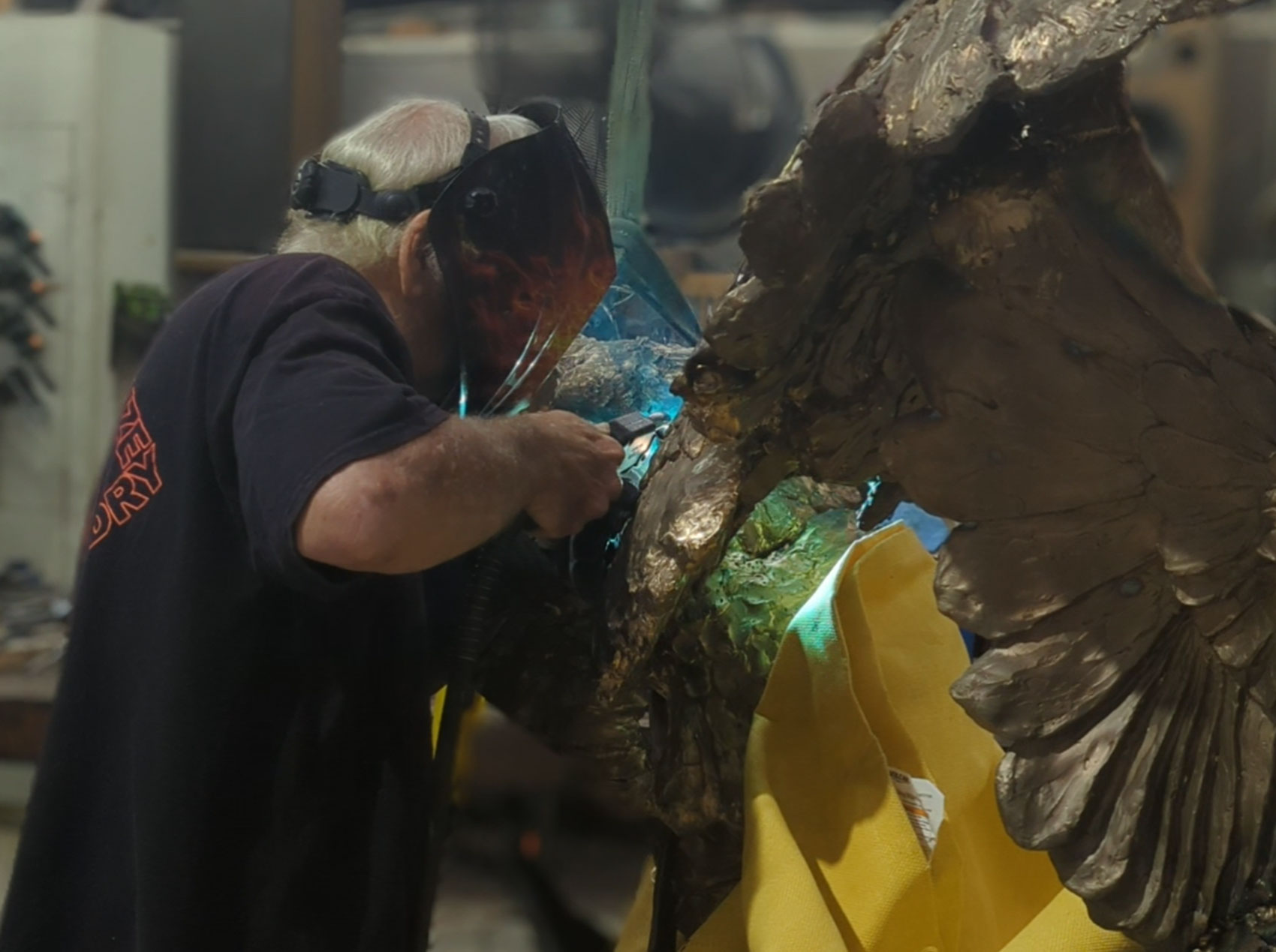
Step 9: Welding
If the original was sectioned into multiple pieces, it would now be carefully fitted and reassembled. A visual inspection is done to check for any casting inclusions. If there are any surface defects, these would also be repaired at this time. All sections of the casting are welded together with great care and attention to alignment.
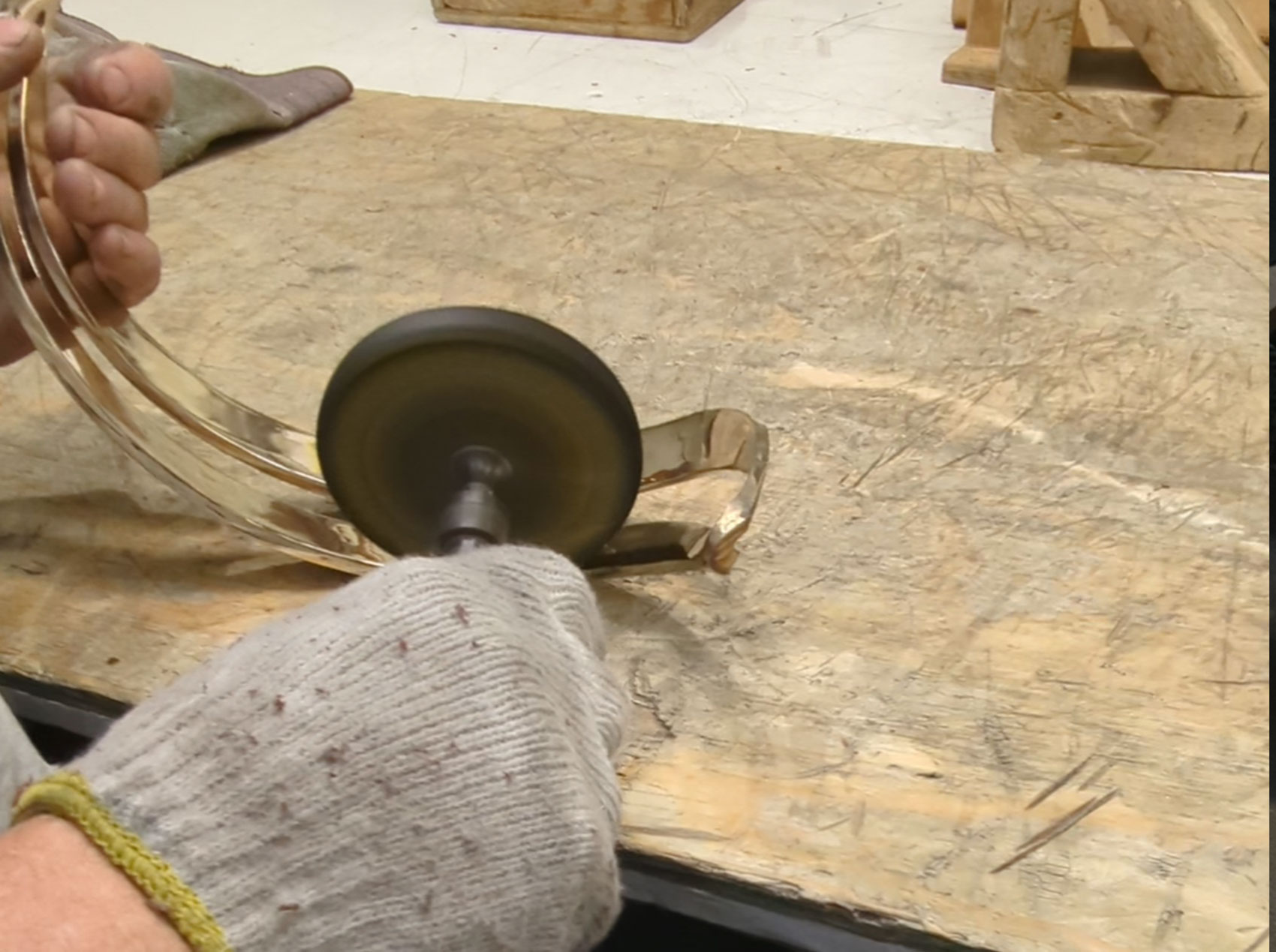
Step 10: Metal Chasing
The sculpture is polished to remove any sign of welding or casting defect and to prepare the bronze for the patina (coloring process).

Step 11: Glass Beading
Several different polishing and detail tools are used without disturbing the original texture of the sculpture. A final metal inspection is performed at this stage of the process.
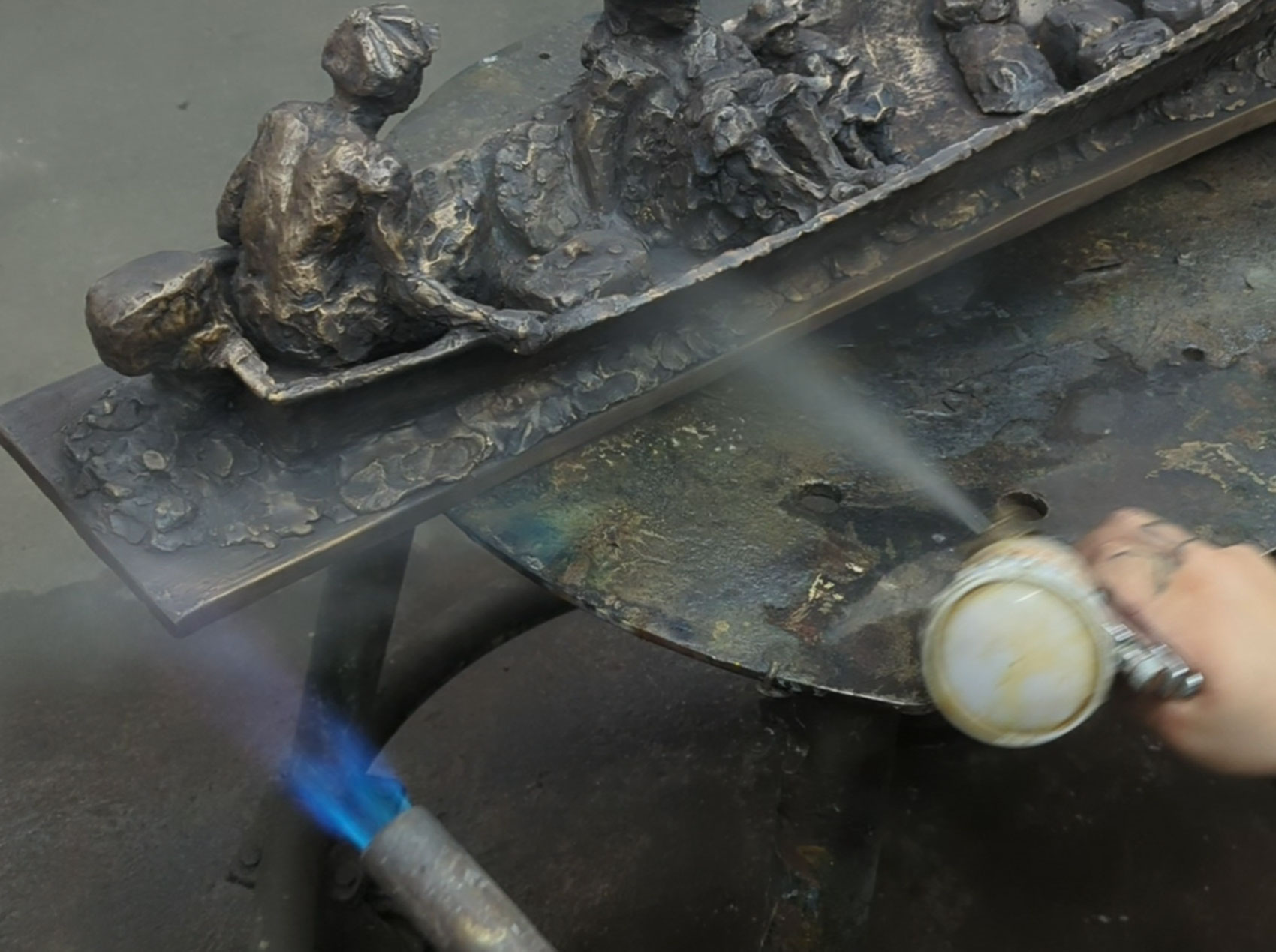
Step 12: Patination
The patina is the finished color. Depending on the artist's preference, we may use a variety of different chemicals which react to the metal to achieve a certain look. Colors like: Museum Brown, Antique Brown, Verde Green, and Gold Leaf are just a few we offer. After the patina is applied, and depending on whether the artwork is inside or outside, the sculpture is sealed with a wax coat and/or lacquer to protect the finish. We offer hundreds of custom finishes.

Step 13: Bases & Mounting
The patina is the finished color. Depending on the artist's preference, we may use a variety of different chemicals which react to the metal to achieve a certain look. Colors like: Museum Brown, Antique Brown, Verde Green, and Gold Leaf are just a few we offer. After the patina is applied, and depending on whether the artwork is inside or outside, the sculpture is sealed with a wax coat and/or lacquer to protect the finish. We offer hundreds of custom finishes.
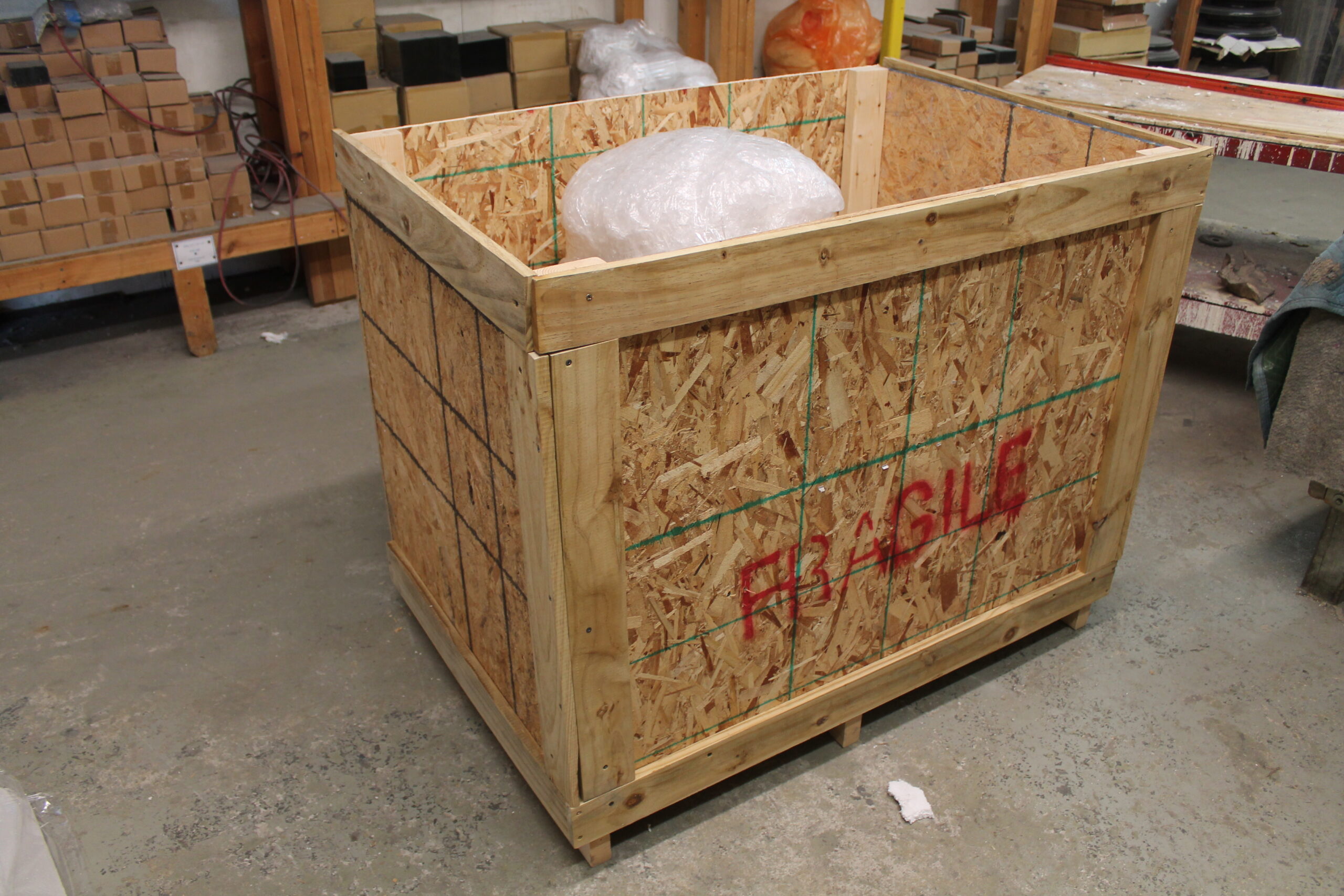
Step 14: Crating & Shipping
The sculpture is carefully and securely packaged in a wooden crate for safe shipping.

Step 15: Delivery & Installation
Delivery and installation of the final product complete the bronze art casting process.
